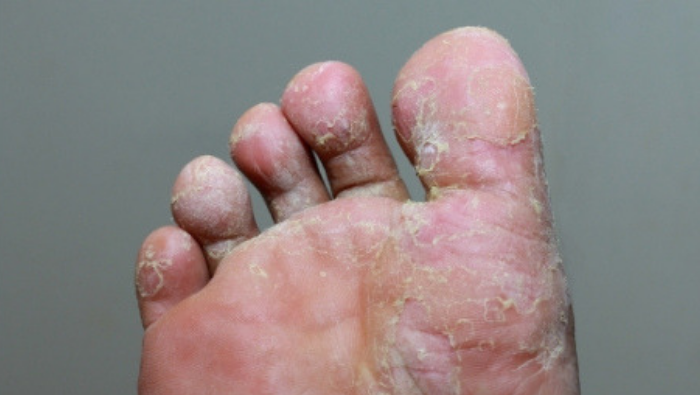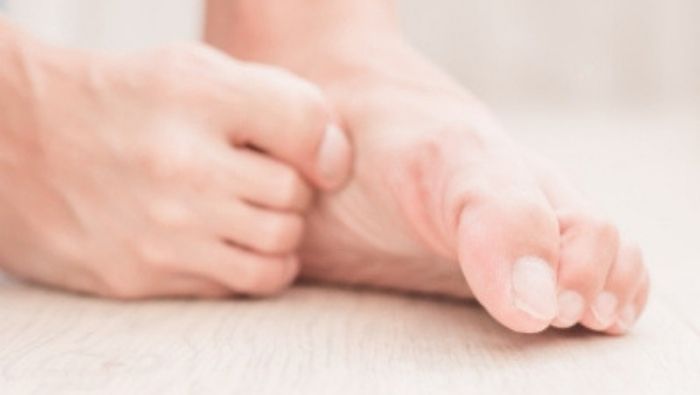Athletes foot is caused by a fungus on the skin of your feet. Unlike the name leads you to believe it’s not just athletes that suffer from the condition – at some point in our lives we all get athletes foot in varying severity. It is not usually serious and can often go un-noticed but, if left untreated it can become chronic and lead to further problems such as fungal nail infections as well as spread to other people.

The fungus we find on the skin likes warmth, darkness and moisture, so a nice pair of sweaty trainers are like a dinner date for the fungal spores hence it gets its name ‘athletes’ foot. However, realistically if our feet get damp for any reason, the fungus can take hold.
Areas affected by Athletes foot may appear:
- Sore
- Shiny, dry, red, scaly and flaky
- White, soggy and cracked
- Sometimes the area may develop blister like pustules which can burst and peel

It’s worth noting the itch is usually the last symptom so don’t always think it can’t be athlete’ foot if it’s not itching! It is most commonly found starting in between toes as this is often forgotten about when we dry after a bath or shower and can remain soggy during the day. It can quickly present in the arch of the foot and around the borders of the feet. Most of the athlete’s foot I see and diagnose in clinic is not presenting in between the toes at all, but more around the borders and soles of the feet. This is not always itchy and therefore misdiagnosed as dry skin before commencing correct anti-fungal treatments.
How to treat it?
As most athletes foot infections are caused by a dermatophyte infection, treatment starts with a topical cream with the active ingredient Terbinafine. (It is with noting that in some rare cases the fungus may not be sensitive to terbinafine and skin samples may need to be taken). Products such as Lamisil and Daktarin do the job. I recommend applying daily for 2 weeks, having a week break then commencing another 2 week course.

Newer products are now available on the market which applied once can cure the problem, however more chronic flares may need a second treatment a few weeks later if symptoms do not fully resolve. These are ideal for those who don’t always remember to apply cream daily!
Top tips for preventing fungal skin infections
Treating skin is not the only thing you need to do to cure the problem. Fungal spores can survive on dead skin cells within the shoes and socks so this need treating too:
- Wash all socks on a 60-degree wash or hotter, our usual 40-degree cycle just doesn’t cut the mustard!
- Spray your shoes regularly using a spray such as Daktarin active as this will kill any fungal spores within your shoes that might spark reinfection.
- Ensure that you dry your feet thoroughly after washing them, especially between your toes.
- Wear a fresh pair of cotton socks every day you may need to change them more than once a day if you find your feet getting damp from sweat
- Avoid wearing shoes with no socks.
- Wear shoes made from more breathable materials such as leather rather than plastics.
- If your shoes get wet then allow a considerable amount of time for them to dry out
- Try to avoid walking around barefoot in public places
- Avoid sharing towels and make sure they are washed regularly
- When applying moisturiser to your feet avoid applying between your toes
Its best to follow all these tips regularly to prevent re-infection!
You may be interested in other blogs linked with this topic.
Not sure if you have athletes foot? Tried the above advice and it not improving? Contact us for a diagnosis and advice today.

